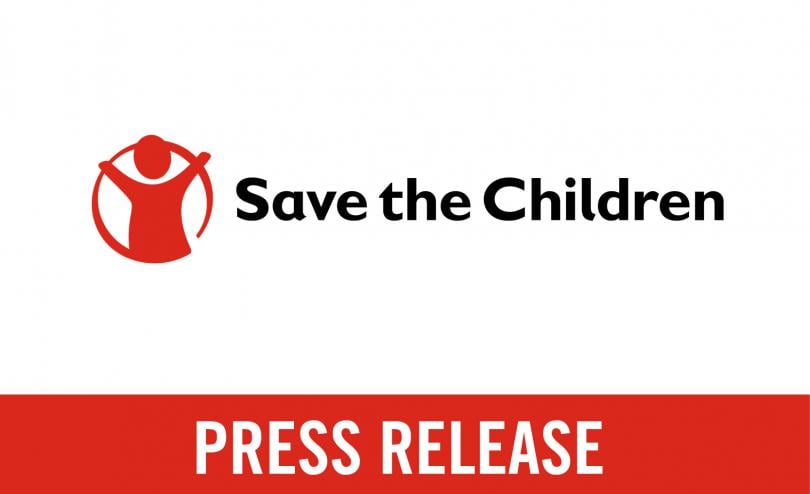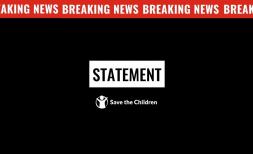Facebook and Instagram campaign using behavioural science drove more than 6 million people closer to COVID-19 jabs

- ‘This is our shot’ reached more than 150 million people in 12 countries across Meta platforms in an effort to promote vaccine confidence and boost jab rates so children’s lives can return to normal.
- India saw the largest positive shift in people’s attitudes towards vaccine side effects while Peru saw the highest positive shift in people’s attitudes toward vaccine safety.
An estimated 6.4 million[i] adults in 12 countries[ii] were likely driven one step closer to getting COVID-19 vaccinations following Save the Children’s first behavioural science-led social media campaign to promote COVID vaccines, in collaboration with Meta, using Facebook and Instagram.
Low vaccination rates in low- and middle-income countries have left billions at risk of serious illness and death, putting a strain on already vulnerable health systems and pushing millions more into poverty. Millions of children have been unable to go to school or to receive life-saving routine vaccinations, leaving them exposed to diseases deadlier to them than COVID.
By understanding the barriers to being vaccinated—which include concerns about vaccine-related side effects, its safety, and whether it’s important—‘This is our shot’ turned to behavioural science to help improve attitudes and increase vaccine uptake.
Tactics included contextual video and static ads targeted to each country featuring a clear call to action, facts and simple messages, delivered by effective ‘messengers’, including children, influencers, and medical professionals. All ads included links to national vaccine registration sites.
Over an eight-week period between November 2021 and February 2022, the campaign targeted 18 to 64-year-olds in countries with some of the lowest vaccination rates in Asia, Africa and Latin America. More than 150 million[iii] people were reached using a variety of ads on several of Meta’s platforms, including Facebook and Instagram.
As part of the campaign, some Save the Children offices in countries with low digital usage also turned to more traditional communication tools to increase vaccine uptake, including radio talk shows and ads in Bangladesh, Nepal, and Pakistan.
The results were reached using Meta’s Brand Lift Studies, which use polling within the ad environment to help understand an ad’s impact on control and test target groups and any potential shift in knowledge, attitudes and self-reported behaviours.
Based on those reached, it is likely that an additional 6.4 million people globally expressed that COVID-19 vaccines are important—potentially driving them one step closer to getting vaccinated. More than 9.6 million people clicked-through from the campaigns on Meta platforms to national vaccine registration sites.
Of the nearly 55 million people reached in India, the campaign potentially led to four million more expressing that they were barely concerned or not concerned about the potential side effects of the COVID-19 vaccine. The second and third highest results were in Kenya and Bangladesh, respectively.[iv]
Of the 3.5 million reached in Peru, the campaign potentially led 122, 000 more people to express that they were barely concerned or not concerned about the safety of the COVID-19 vaccine.[v]
In Cambodia– based on a reach of 1.2 million – the campaign potentially led to 27,000 more people expressing that they were better aware of the importance of COVID19 vaccines.[vi]
In Asia, Nepal and Bangladesh had the highest percentage of people clicking through to their national COVID vaccine sites (3.2% and 1.7% respectively), while in Africa, Kenya saw the highest percentage of click-throughs to its COVID vaccine site.
Dr Firdausi Quadri, a prominent Bangladeshi immunologist and infectious disease specialist who featured in her country’s ad campaign, said:
“Bangladesh has taken steps to ensure COVID-19 vaccination is available for all eligible citizens, especially marginalised communities, by making the vaccination process easy. While some people were sceptical and apprehensive about the vaccine at first, campaigns like this one have helped dispel these doubts.”
"As a researcher who has done a lot of work on vaccines, my goal is to protect my fellow citizens by encouraging them to get vaccinated as soon as possible. I applaud Save the Children's campaign to get people interested in being vaccinated—especially those who are most at risk from COVID-19.
In the Philippines, the campaign was amplified by the engagement of Save the Children’s Ambassador, Liza Soberano, as well as Dr Lulu Bravo, MD, Executive Director of the Philippine Foundation for Vaccination who addressed issues on immunization and encouraged the public to sign up to the government’s three-day National Vaccination Drive late last year.
‘This is our shot’ is a Save the Children ACTIVATE initiative—an innovative project that uses targeted social media and digital communications to increase intentions to vaccinate in low- and middle-income countries. It uses behavioural science to adapt communications content, tools and platforms to address the concerns of specific populations and to nudge individuals towards increased intention to vaccinate.
Allison Zelkowitz, Director of Save the Children’s Centre for Utilising Behavioural Insights for Children (CUBIC), said:
“COVID-19 has had a devastating impact on some of the world’s poorest children, leaving them orphaned, out of school, or unable to get routine life-saving vaccinations against other far deadlier diseases because health systems have been under such tremendous strain.
“By first understanding the barriers to vaccine uptake in each country, ‘This is our shot’ was able to reach millions of adults and get them to take action—and behavioural insights were key to this.”
ACTIVATE is part of Save the Children’s Centre for Utilising Behavioural Insights for Children (CUBIC), which is supported by Save the Children’s Global Centre for Excellence (CoE) in Innovation. The CoE supports innovators in overcoming barriers to scaling their projects by providing capacity building and funding support.
An estimated 100 million additional children have been driven into poverty since the start of the pandemic -- a 10% increase compared to pre-COVID-19, according to data analysed by UNICEF and Save the Children. This spike means a projected 1.1 billion children are now living in multi-dimensional poverty, which includes severe deprivation of their education, health, housing, nutrition, or water and sanitation.
Save the Children believes every child deserves a future. Since our founding more than 100 years ago, we've changed the lives of more than 1 billion children. Around the world, we give children a healthy start in life, the opportunity to learn and protection from harm. We do whatever it takes for children—every day and in times of crisis—transforming their lives and the future we share
[i] Figure based on Meta Brand Lift Studies results, which use polling within the ad environment to help understand an ad’s impact on a control and test target groups and, therefore, on potential shifts in attitude. Of the 150 million people reached by Save the Children’s ad campaigns, 6.4 million expressed that they were barely or not concerned about either the vaccine side effects or vaccine safety, and were better aware of the importance of the COVID-19 vaccine—leaving them one step closer to potentially getting jabbed.
[ii] Bangladesh, Cambodia, Colombia, India, Indonesia, Kenya, Mexico, Nepal, Nigeria, Pakistan, Peru, and the Philippines.
[iii] 137,400,242 in Asia; 5,020,740 in Africa, and 6,330,784 in Latin America.
[iv] Based on an estimated 54,917,289 people reached by the campaign in India, 706,419 reached in Kenya, and 15,811,332 reached in Bangladesh. This potentially means 4,118,797 more people in India, 19,426 more people in Kenya, and 382,528 more people in Bangladesh who saw the campaign's ads were likely to express that they were barely or not concerned about the potential side effects of a COVID-19 vaccine.
[v] Based on an estimated 3,259,856 people reached by the campaign in Peru, 16,753,456 reached in Indonesia, and 18,246,456 reached in Pakistan. This potentially means 122,382 more people in Peru, 406,493 more people in Indonesia, and 674,357 more people in Pakistan who saw the campaign's ads were likely to express that they were barely or not concerned about the potential side effects of the vaccine.
[vi] Based on an estimated 1,244,220 people reached by the campaign in Cambodia, 4,314,321 reached in Nigeria, and 706,419 reached in Kenya. This potentially means 27,125 more people in Cambodia, 81,814 more people in Nigeria, and 12,161 more people in Kenya who saw the campaigns were likely to express that they are now better aware of the importance of the COVID-19 vaccine.
For further enquiries, please contact:
Natasha Dos Santos, Natasha.dossantos@savethechildren.org / +44 (0)7787 191957
Antonia Roupell, antonia.roupell@savethechildren.org/ +44 (0)7855 957573
Our media out of hours (BST) contact is media@savethechildren.org.uk / +44 (0)7831 650409
We have various spokespeople available.
Please also check our Twitter account @Save_GlobalNews for news alerts, quotes, statements and location Vlogs.




